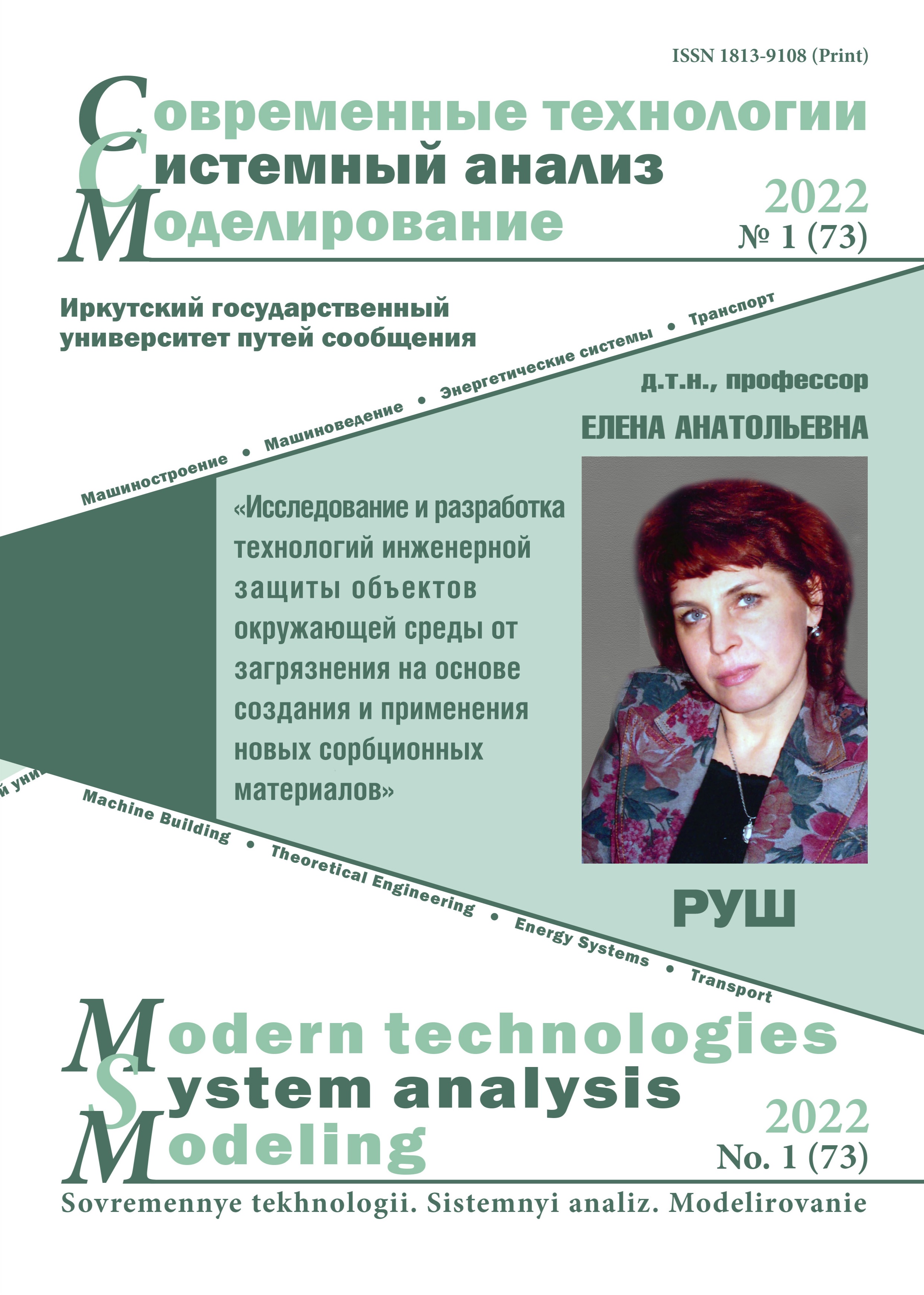Reconstruction of a section of the railway in order to increase the speed of trains
Keywords:
railway, railway reconstruction, capacity and carrying capacity of the road, railway transportation, organizational and technical measures, reconstructive measures, traction calculationsAbstract
The development of the growing freight turnover necessitates an increase in the carrying capacity of railway lines. Defined as the difference between the required and available carrying capacity, this can be achieved through organizational, technical and reconstruction measures. Organizational and technical measures include those aimed at using the reserves of carrying capacity and therefore not requiring significant costs. As a result, the mass and speed of train movement increases, station intervals decrease, the processing of trains is accelerated with their parking time at stations is reduced. Reconstruction activities are associated with the use of new equipment and construction work, which requires significant capital expenditures. Reconstruction of railways is carried out by stages in the most appropriate order, which reduces capital and transportation costs. To ensure the required throughput of the railway line, the most rational organizational, technical and reconstruction measures are selected on the basis of a technical and economic comparison of options. When developing a project design for the reconstruction of an existing railway, the following tasks are solved: optimization of the route position in plan and profile; choice of the technical equipment elements of the line, in particular; outlining the ways to increase the carrying capacity of the railway. In order to solve these and other problems of the design of railways, algorithmic methods are used to determine the mass of a train with a known longitudinal profile and a given locomotive, the speed and travel time of the train, the consumption of electrical energy for electric traction or diesel fuel for diesel traction. Such methods are called by general name of traction calculations, which are based on the general provisions of the train traction science.
References
Аль-Арадж Модар. Обоснование повышения мощности железных дорог в ЕТС Сирийской Арабской Республики : дис. … канд. техн. наук / Аль-Арадж Модар ; Петербур. гос. ун-т путей сообщ. СПб., 2000. 202 с.
Электровозы серии БКГ Белорусской железной дороги // Центр інформації транспорту України : сайт. URL : https://railway-publish.com/articles-icut-magazine/articles-lokomotiv-inform/8319-elektrovozyi-serii-bkg-belorusskoy-zheleznoy-dorogi.html. (Дата обращения: 27.12.2021).
Довгелюк Н.В., Ахраменко Г.В., Вербило В.А. Реконструкция железных дорог. БелГУТ, 2017. 339 с.
Браништов С.А., Ширванян А.М., Тумченок Д.А. Методы оценки пропускной способности железных дорог // Ин-формационно-управляющие системы. 2014. № 5. С. 51–57.
Krueger H. Parametric Modeling in Rail Capacity Planning // Winter Simulation Conf. Piscataway. 1999. P. 1194–1200. DOI:org/10.1145/324898.325036
Kaas A. Methods to Calculate Capacity of Railways (Metoder Til Beregning af Jernbanekapacitet) : phd-thesis / Technical University of Denmark. Denmark, 1998. 182 p.
Ерофеев А.А., Ковтун П.В., Дубровская Т.А. Проблемы повышения скорости движения поездов на существующих железнодорожных линиях // Вестник БелГУТа. 2018. № 39. С. 57–60.
Увеличение пропускной способности // helpiks.org : сайт. URL: https://helpiks.org/8-86807.html. (Дата обращения: 19.12.2021).
Миронов В.С., Дубровская Т.А. Сфера эффективности скоростного пассажирского транспорта на железных дорогах // Транспортная инфраструктура сибирского региона : материалы Девятой междунар. науч.-практ. конф. Иркутск, 2018. Т.1. С. 534–538.
СНБ 3.03.01-98. Железные дороги колеи 1520 мм. Минск : М-во архитектуры и строительства Республики Бела-русь, 1998. 26 с.
Галай Э.И., Рудов П.К., Галай Е.Э. Исследование взаимодействия тормозных систем электровозов вл80, бкг1 и со-става вагонов при выводе грузового поезда с перегона // Актуальные вопросы и перспективы развития транспортного и строительного комплексов : материалы IV Междунар. науч.-практ. конф. Гомель, 2018. С. 18–20.
Локомотивы развития // Железнодорожник Белоруссии : сайт. URL: http://xpress.by/2018/11/21/lokomotivy-razvitiya/ (Дата обращения: 24.12.2021).
Особенности локомотивного хозяйства в Республике Беларусь и мировой опыт ведения локомотивного хозяйства // studbooks.net : сайт. URL: https://studbooks.net/2169698/ekonomika/osobennosti_lokomotivnogo_hozyaystva_respublike _belarus_mirovoy_opyt _vedeniya_lokomotivnogo_hozyaystva/ (Дата обращения: 23.12.2021).
Дубровская Т.А. Увеличение пропускной и провозной способности железнодорожного пути // Проблемы безопас-ности на транспорте : материалы X Междунар. науч.-практ. конф. Гомель, 2020. Ч. 4. С. 24–25.
Об установлении скоростей движения поездов на Белорусской железной дороге (с изменениями и дополнениями) : приказ начальника дороги от 28 апр. 2021 № 231Н. Минск. 2021. 93 с.
Френкель С. Я. Техника тяговых расчетов. Гомель : БелГУТ, 2005. 80 с.
Сахаров П.А. Тяговые расчеты для участка железной дороги. Гомель : БелГУТ, 2016. 107 с.
Золотых Н.С. Усиление пропускной способности железнодорожных линий // Труды 80-й студенческой научно-практической конференции РГУПС. Воронеж, 2021. Ч. 2. С. 58–59 с.


